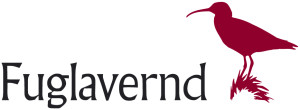Fuglavernd BirdLife Iceland
Fuglavernd – BirdLife Iceland was founded in 1963, it is an NGO, membership based organization with 1300 members in 2024.
The mission of the organization is to work for the protection and conservation of Iceland’s birds and their habitats and to promote enjoyment, understanding and study of birds and their habitats.
About Fuglavernd
Fuglavernd was founded in 1963. For almost 30 years the work was nearly entirely focused on saving the Icelandic White-tailed Eagle population from extinction. The key person in this endeavour was Björn Guðbrandsson (1917-2006), a medical doctor that devoted most of his spare time working toward this goal. Thanks to him and his co-workers the Icelandic White-tailed Eagle population was not extirpated in Iceland. The White-tailed Eagle is on a slow path of recovery and the population is estimated at 80 pairs (summer of 2018).
2024 Statute of BirdLife Icealand
Species conservation
Fuglavernd follows closely the status of Iceland’s birds an acts for their protection if needed. Bird populations that have been in decline for the past years get special attention. Fuglavernd supported a hunting ban on Rock Ptarmigan, when the species was in drastic decline. Fuglavernd also pressed for a hunting ban on the Greenland White-fronted Goose, which came in effect in 2006. Among other species that have gotten special attention from Fuglavernd in the past are the Grey Phalarope and the Slavonian Grebe. Both are listed as vulnerable in Iceland’s Red list.
Habitat conservation and restoration
Fuglavernd is advocated strongly for habitat conservation and variety. The society was instrumental in starting the discussion about wetland restoration in Iceland. Fuglavernd has been campaigning for conservation and protection of some Important Bird Areas (IBA) in Iceland during the last decade, and there have been victories and also defeats during that time. Hopefully the maintaining of the IBA database for Iceland will play a more important role for Fuglavernd in the future. The society wants to develop monitoring schemes for some of the IBA areas using voluntary work. We also encourage the state, local authorities and others to establish nature reserves in Iceland.
Reserves
Fuglavernd runs a reserve called Flói Nature Reserve in the Southern Lowlands of Iceland in co-operation with the Árborg community. This is a wetland area rich in birdlife and is a part of the IBA Ósasvæði Ölfusár. The reserve is a river delta at the eastern bank of the river Ölfusá, in the Flói area. Fuglavernd has restored wetland in the reserve, marked walking paths and built a birdwatching hide. We are hoping to be able to be running two more bird reserve in near future, both in the southern part of Iceland.
BirdLife International and Fuglavernd
Fuglavernd is a partner of BirdLife International. The society became an associate member in 1994 and a representative of BirdLife International in 1998 and a full partner in 2018. Fuglavernd plays an important role in Iceland in lobbying politicians, decision makers and developers for the benefit of the birds and their habitats. Also, Fuglavernd has benefited greatly co-operating with the Royal Society for the Protection of Birds in Britain.
Garden Bird Survey
Fuglavernd has run a winter garden bird survey since 1994-95. In total 74 bird species have been seen in the survey. Redwing, Snow Bunting, Raven, Redpoll, Common Blackbird and Starling are the most common garden birds. In the 2010-11 winter survey they were seen, respectively, in 13 (100%), 13 (100%), 12 (92,3%), 11 (84,6%), 11 (84,6%) and 10 (76,9%) of the gardens.
Public education
Education is an important part of Fuglavernd’s activities. From autumn through spring different kinds of events are organised, such as lectures and field trips. Fuglavernd publishes an annual magazine named Fuglar (Birds), which is only available to members. Brochures and leaflets are also published on a regular basis.
Membership
In 2024 there were just short of 1.300 members in Fuglavernd. Most of the members live in the south-west part of Iceland. There are also a few members in other countries than Iceland. If you are interested to become a member and to support the work of Fuglavernd, bird and habitat conservation in Iceland, please send us an email at fuglavernd@fuglavernd.is.
Shop
In our online Shop you can buy pin badges or make a donation to support our work. We appreciate all the support we can get, so thank you in advance for you donation.
See: Online Shop
Key Activities
- Campaigning for wetland restoration and conservation. Wetlands in the lowlands of Iceland have been severely affected by drainage operations during last century.
- Meetings and bird-watching events held for members and the public regularly.
- Supervise and encourage members of the society and the public, monitoring and counting birds, both common and endangered. The Society has run a winter garden bird survey since the winter 1994-95 and a Garden Bird Weekend during the last weekend in January since 2004.
- Long-term monitoring of the White-tailed Eagle in cooperation with Icelandic Institute of Natural History.
- A quality color magazine for members called Fuglar (“Birds”) has been published annually since 2003 and other information leaflets published and distributed.
- Running the Flói bird reserve, and an IBA site, with the cooperation of the Árborg community.
- Restoring wetlands in Iceland with Endangered Landscapes & Seascapes Programme.
- Continuing revising and adding to the Important Bird Areas database
- Lobbying for the conservation of IBAs in Iceland..
- Following a successful campaign for the introduction of a hunting ban on the Greenland White-fronted Goose.
- Promoting activities like the Day of the Environment, International Day of Biological Diversity, and International Migratory Bird Day.
- Organizing an ornithological conference every second year.
- Set up a programme for the creation of environmental educational material for preschoolers.
We work to protect birds and other wildlife, restore our natural countryside and campaign for better laws for birds and the environment. Your donation will contribute to this work and help us to make a healthy environment rich in birds and wildlife.

